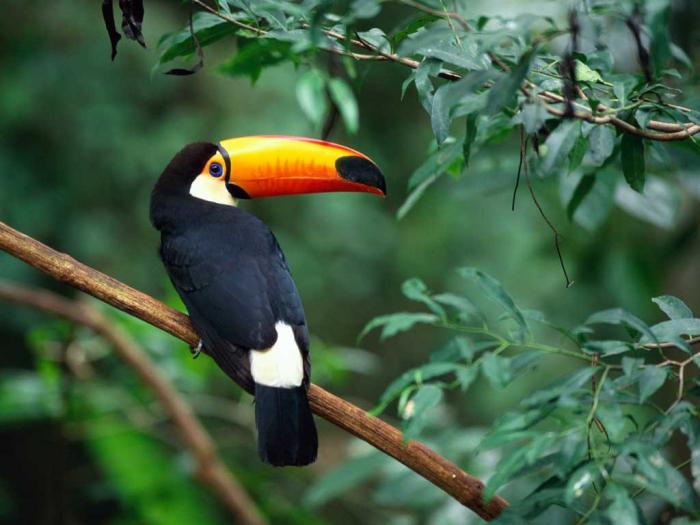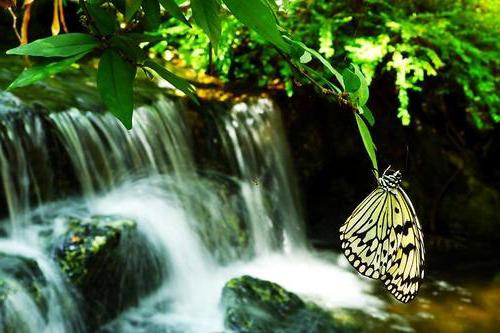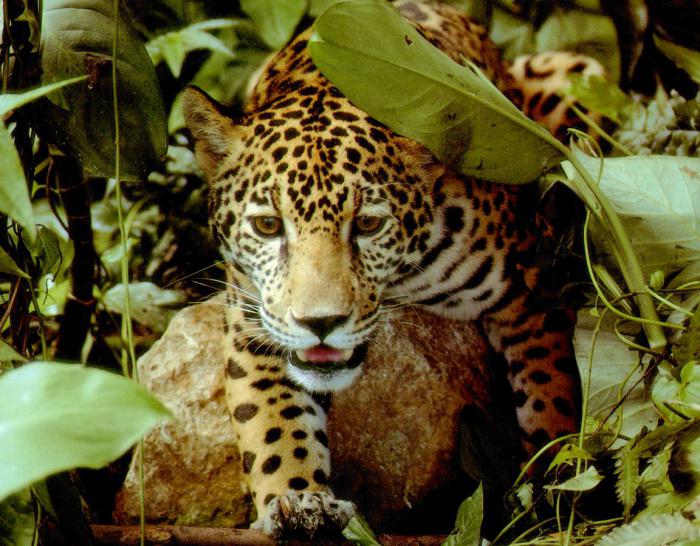The Arctic is one of the coldest and most lifeless regions on Earth. Includes part of Eurasia. Geographical position the arctic belt is bounded by the North Pole and the Arctic Ocean. There are common borders with the American continent. Often, the northern regions of the Pacific are referred to the water area of the belt, and the total Arctic occupies more than 27 million square kilometers.
Separating surfaces of hot and cold air masses are places of choice for eddies, especially during hot seasons, eddies, tornadoes, and in the tropics, hurricanes. Hurricanes are swirling phenomena with a diameter of 100 to 600 km. The tornado is only a few hundred meters to several kilometers in diameter, which does not prevent them from exerting such a devastating effect on their passage. At sea, a tornado leads to a stream of water.
With the exception of a few tornadoes, Europe is not affected by the Great Vortexes. Hurricanes are relatively limited, although they do occur. The vine has extraordinary potential. Beyond the core mission of offering a delicious drink and making us happy, archived records of vintage, early bloom, wine quality and prices are essential for climate change reconstruction and long-term weather forecasts. The Czech archives hide valuable records in this regard. Let's take a look at old grunt books and newspaper clippings together and see what can be learned from the growing vines.
Climatic zone
The meteorological indicators of this area are due to the cold northern Arctic climatic zone dominates the entire water area of the Arctic Ocean, as well as on the outskirts of Siberia. Frosty weather in these parts of the Earth lasts all year round. Permafrost not warmed up by the sun's rays, as they fall on the ground tangentially.
Don't worry, this isn't a weather forecast or a hand-read berry spell. The meaning of the vine in this context is completely different and certainly interesting. The close relationship between grape cultivation and weather conditions was soon noticed by climatologists and began to use it as a source of information about the nature of the weather. From the harvest, the beginning of flowering, the quality and price of the wine, you can see how favorable the year was. Thus, an entire generation of scientists has searched for weather reports, church and municipal archives, business calendars, and individual winery documents for a century.
We can say that the cold in the Arctic is constant. Even in summer time solar radiation unable to penetrate thick ice layers. The surface still receives a small amount of heat, but it goes to melting the snow cover. The Arctic climate zone is always characterized by subzero temperatures, and precipitation in this area is extremely rare. The reason is the minimal accumulation of water vapor due to the constant low temperatures. Average level precipitation does not exceed 200 mm per year.
Late harvest and wine quality as a "compass" for setting the temperature in historical times
We know how the weather changed during the tiny ice age and how the vine was successful thanks to extensive research in the archive. The growth of vines, flowering and crops is mainly driven by cold and rainy weather, extremely low temperatures, but also late spring and early autumn frosts, heavy rains and hail. Therefore, late harvest is critical in determining the growth of the vines and suggests that average annual temperature was lower.
Closer to the European part of the continent, it predominates. The main zone of its distribution is considered Eastern Siberia... Here the climate is less severe, suitable for life. Temperatures often rise to +12 degrees. Annual quantity precipitation is twice as much - up to 450 mm.
Each climatic zone of the earth differs from others in unique characteristics. Even such intermediate options as subarctic or subtropical have their own characteristics. They can define vegetable world or the conditions of farming. What exactly distinguishes the subtropical belt? Let's try to figure it out.
In contrast, an early harvest indicates a higher average temperature during the growing season. The ratio of temperature and humidity during the ripening of the grapes is reflected in the quality of the wine. In order to better process the archive of subjective assessment, the verbal description of the quality of the wine and the sugar content should be translated into groups and marked with appropriate codes: for example, very good, good, less good and bad. The grapes with a high sugar content in archival records, called "sweet and very sweet wine", matured during warmer and drier periods.
Where is he located?
The subtropical climatic zone lies in two hemispheres. It is located between the equator and the tropics. Due to the extremely favorable conditions for human survival, which the subtropical belt creates, it was on such a territory that the first ancient civilizations appeared. And Mesopotamia, and Palestine, and Greece are located in this strip. In addition, now these are the most best areas for tourism and agriculture: olives, grapes, citrus fruits and many other species grow here. 
In contrast, "sour wine", characterized by a low sugar content, indicates cold and rainy weather and short summer season... From Bzęca, Boutica, Velke Pavlovic and Znojmo, wines have been preserved in different periods and can be displayed over the past 200 years. Other valuable data on the quality of wine over the century, which for the most part cover the records of the Great Pavlovich, were collected and published by Prof.
A more objective criterion for assessing the quality of wine and its use for historical climatology is the determination of the sugar content in the pressed state with necessity. Therefore, you first need to convert the values obtained from other meteorometers. A refractometer based on the principle of light refraction is used today to measure the sugar content of berries in the vineyard. Based on very good sugar content, 33% of the years were rated very good and were associated with more high temperatures air.
Main characteristics
Subtropical belt characterized by low precipitation in summer - such conditions create high pressure areas and cyclones with frequent rains in winter. The temperature in the warmest month averages twenty-five degrees, and in the coldest - five. Summer is characterized by dry and hot weather with a minimum of clouds, while winters are quite windy and rainy. Such conditions provide a small amount of snow that does not linger for long. If the territory of the subtropical zone covers the highlands, the so-called cold desert climate occurs. It is distinguished by extremely cold winters with temperatures down to minus fifty and cool summers, unstable snows and strong winds. V eastern regions the belt is dominated by the monsoon variant. It is characterized by warmer and cloudy summers. Winter is getting drier. The subtropical belt, in which precipitation is usually scarce, here is characterized by an amount reaching almost a thousand millimeters. Because of this, lush vegetation grows in this area and agriculture develops well.
On the other hand, low sugar content indicated temperatures below the average growing season and covered up to 20% of all vintage wines with wines reported as very sour. V Western Europe archival records of winemaking from 21 departments of the northern, central and eastern France, Switzerland and the South Rhine have been studied from today to a year. On the contrary, vineyards from southern France, south of Geneva and western France already belong to another climatic zone and therefore were not part of the research.
It is all the more pleasant that the records from South Moravia are not only richer, but also varied. However, not all can be used for historical climatological purposes, many of them have been destroyed and lost, for many years unhealthy records are completely absent, and some contain only information about the sale of vineyards or wine cellars on the prices of wines sold.

Territories
Where does this weather occur? The subtropical climatic zone covers a large territory of Turkmenistan, the state of Rajasthan in India, Afghanistan in the flat part, the pampas Iranian Highlands, Bukhara, the Xinjiang Basin, the Great Basin of South Australia.
Characteristic plants
The subtropical belt, whose precipitation is seasonal, is well suited for some species of flora. All vegetation can be subdivided into several types - hemigileia, monsoon, hard-leaved or Mediterranean forests. Each of them is accompanied by certain types of plants. Stiff-leaved plants develop in a special way so as not to depend on large amounts of water. The canopy of such a forest is located in one tier, with wide crowns. Stiff-leaved areas are accompanied by a dense undergrowth of evergreen shrubs. The trunks of trees branch out from the ground and are covered with cork or crust. The subtropical zone also includes the region. The main trees inhabiting such territories are beeches, magnolias, firs, bamboos, and all kinds of palm trees. Such a forest consists of many layers with dense undergrowth and vines. And finally, the hemihilea. These are evergreens in which vines and epiphytes are not very common. Conifers, ferns, oaks, magnolias, camphor laurels are widespread. 
At the beginning of the century, there were several very good years... But the years were also very unfavorable. A severe winter damaged our vineyards, so there was no wine. ... In the Czech Republic, but also in other European countries, phenomenological manifestations of important plant species are observed in the long term using a network of observation stations. For grapes, carry out separate phenophases depending on weather conditions: the beginning of spring sap, leaf buds, first leaves sprout, beginning of flowering, full flowering, end of flowering, hanging grapes, berries and softening the beginning of harvest.
Characteristic animals
The fauna of the subtropics is well adapted to climatic conditions zones of their habitat with hot summers, cool winters and possible droughts. Therefore, the activity of animals is often seasonal, tied to the moments of the most favorable combination of temperatures and air humidity. Ungulates such as mouflons and fallow deer can be found in this strip. Small predators of viverras also live in the subtropics, and bears are found in such a zone in the Pyrenees. Monkeys, jackals, wolves, porcupines, chameleons can be found in hard-leaved areas. Seed-eating animals are widespread - rodents, squirrels, dormouse. There are many different reptiles, and birds are represented by vultures, finches, falcons, linnet, goldfinches, great titmice. Ungulates such as gazelles are found in desert areas, or predators are common - tigers, leopards, cheetahs. There are many jackals and hyenas. On such a territory, you can find many birds, these are sparrows, and finches, and blue magpies, and marble teals, and mockingbirds, and wheats. Black vultures and griffon vultures are common. In areas of the Mediterranean, chameleons, geckos, lizards, and many snakes, including snakes and snakes, are common. The world of insects inhabiting the subtropics is also rich - butterflies, beetles, termites are found here in an impressive variety.
Of course, this also depends on the species. What are phenology and phenophase? Phenology is the study of the temporal flow of the main manifestations of life, depending on changes in the weather, the alternation of seasons and environment... The subject of research is, as a rule, recurring phenomena in the development of living organisms - plants, animals and fungi.
Let's take a look at the recent and see what can be read and predicted from accurate phenological data on vines. He found that constant climate change significantly affected the development of the vine, shortening and accelerating its vegetation phase. For example, the spring and summer phenophases decreased by 8-24 days compared to centuries. The biggest shift appears in spring sap, late flowering and hanging.




